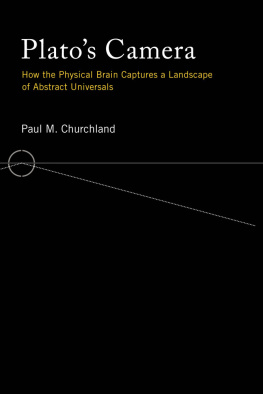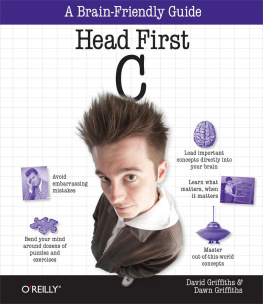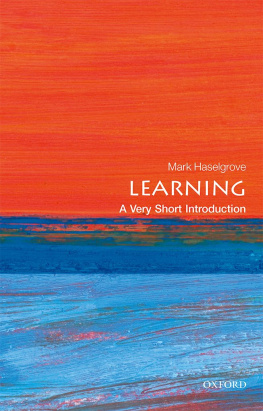Churchland - Platos Camera
Here you can read online Churchland - Platos Camera full text of the book (entire story) in english for free. Download pdf and epub, get meaning, cover and reviews about this ebook. year: 2012, publisher: MIT Press, genre: Romance novel. Description of the work, (preface) as well as reviews are available. Best literature library LitArk.com created for fans of good reading and offers a wide selection of genres:
Romance novel
Science fiction
Adventure
Detective
Science
History
Home and family
Prose
Art
Politics
Computer
Non-fiction
Religion
Business
Children
Humor
Choose a favorite category and find really read worthwhile books. Enjoy immersion in the world of imagination, feel the emotions of the characters or learn something new for yourself, make an fascinating discovery.
- Book:Platos Camera
- Author:
- Publisher:MIT Press
- Genre:
- Year:2012
- Rating:5 / 5
- Favourites:Add to favourites
- Your mark:
- 100
- 1
- 2
- 3
- 4
- 5
Platos Camera: summary, description and annotation
We offer to read an annotation, description, summary or preface (depends on what the author of the book "Platos Camera" wrote himself). If you haven't found the necessary information about the book — write in the comments, we will try to find it.
Platos Camera — read online for free the complete book (whole text) full work
Below is the text of the book, divided by pages. System saving the place of the last page read, allows you to conveniently read the book "Platos Camera" online for free, without having to search again every time where you left off. Put a bookmark, and you can go to the page where you finished reading at any time.
Font size:
Interval:
Bookmark:
Plato's Camera
Plato's Camera
How the Physical Brain Captures a Landscape of Abstract Universals
Paul M. Churchland
The MIT Press
Cambridge, Massachusetts
London, England
2012 Massachusetts Institute of Technology
All rights reserved. No part of this book may be reproduced in any form by any electronic or mechanical means (including photocopying, recording, or information storage and retrieval) without permission in writing from the publisher.
For information about special quantity discounts, please email .
Library of Congress Cataloging-in-Publication Data
Churchland, Paul M., 1942.
Platos camera : how the physical brain captures a landscape of abstract universals / Paul M. Churchland.
p. cm.
Includes bibliographical references and index.
ISBN 978-0-262-01686-5 (hardcover : alk. paper)
ISBN 978-0-262-30082-7 (retail e-book)
1. Philosophy of mind. 2. Universals (Philosophy). 3. Cognitive neurosciencePhilosophy. I. Title.
B945.C473P63 2012
128.2dc23
2011021046
10 9 8 7 6 5 4 3 2 1
Preface
That the eye is a camera is now a commonplace. It most surely is a camera, and we understand in great detail how it works. That the brain might be a camera is much less obvious. Indeed, the suggestion is likely to furrow ones forehead in sheer incomprehension. What could be the point of such a metaphor?
Its point is very different from the case of the eye, but the metaphor is no less apt. The eye constructs a representation, or takes a picture, of the landscape or configuration of the objective spatiotemporal particulars currently displayed before its lens. This picture-taking process is completed in milliseconds, and the eye does it again and again, because its target landscape is typically in constant flux. The learning brain, by contrast, very slowly constructs a representation, or takes a picture, of the landscape or configuration of the abstract universals, the temporal invariants, and the enduring symmetries that structure the objective universe of its experience. That process takes months, years, decades, and more, because these background features take time to reveal themselves in full. Moreover, the brain of each creature typically undergoes this picture taking process only once, so as to produce the enduring background conceptual framework with which it will interpret its sensory experience for the rest of its life. And yet the brain manages to pull that abstract informationabout the universes timeless categorical and dynamical structurefrom its extended sensory encounters with that universe, no less than the eye manages to pull a representation of the fleeting here-and-now from its current luminous input. For this reason, it is appropriate to think of the biological brain as Platos Camera. This marvelous organ has the power to gain a lasting grip on those much more fundamental dimensions of reality, those dimensions that are timeless, changeless, and still.
But what manner of pictures might these decidedly more abstract representations be? On this score, think maps. Not the two-dimensional maps that grace your automobiles glove compartment, but high- dimensional mapsmaps with three, or a hundred, or even a million distinct dimensions, maps with extraordinary resolution and structural detail. Such maps residehundreds and perhaps even thousands of distinct mapsinside the brains of animals in general, and inside the brains of humans in particular. They are maps not of any geographical realities; their high-dimensionality takes them out of that comparatively meager realm. Rather, they are maps of abstract feature domains. They are maps of families of complex universals and the often intricate similarity-and-difference relations that unite and divide them. They are maps, that is, of the timeless and invariant background structure of the ever-changing, ever-unfolding physical universe in which all brains are constrained to operate. They are maps that constitute the conceptual frameworks so familiar to us from the philosophical tradition, and so vital to any creatures comprehension of the world in which it lives.
However, and contrary to tradition, these frameworks are not families of predicate-like elements, united by a further family of sentence-like general commitments in which those elements appear. They are not Quinean webs of belief, nor any other classical system-of-sentences. Indeed, they are not linguaformal at all. Instead, these high-dimensional maplike frameworks typically consist of a large family of high-dimensional prototype points and prototype-trajectories united and mutually configured by an intricate family of similarity (i.e., proximity) and difference (i.e., distality) relations. The full range of such prototype points and trajectories represent the full range of possible kinds of things, and possible kinds of processes and behavioral sequences, that the creature expects, or is conceptually prepared, to encounter.
Their high-dimensionality and abstract subject-matters notwithstanding, such maps represent the world in the same fashion that any successful map represents its target domain. Specifically, there is a homomorphism or conformal relationthat is, a similarity-of-internal-structure relationbetween the configuration of map-elements within the neuronal activation-space that embodies the map at issue, on the one hand, and the configuration of objective similarity-and-difference relations that structure the abstract domain of objective features or processes thereby represented, on the other. In short, the inner conceptual map mirrors the outer feature-domain. Imperfectly, no doubt. But possession of the map allows the creature to anticipate at least some of the real-world features that it encounters, at least some of the time. The interactive library of such maps, possessed by any creature, constitutes its background knowledge, or better, its background understanding (for better or for worse), of the worlds lasting abstract structure. The creatures subsequent pragmatic adventures depend utterly on that background understandingon its extent and on its accuracy. Despite the urgings of some prominent Pragmatists, knowledge is not just a representation-free matter of being able or knowing how to behave. Our knowledge is richly representational, as we shall see, and our motor behavior depends on it profoundly. Its just that the relevant representations are not remotely propositional or linguaformal in character. Rather, they are high-dimensional geometrical manifolds. They are maps.
Maps, as we know, can be indexed. That is, a point within the map can be specified, perhaps with a reaching fingertip, as the map-indexers current location, within the larger range of locational possibilities comprehended by the map as a whole. The indexers fingertip may assume a specific position on the two-dimensional highway map, a position with a unique <x, y> pair of coordinates, to indicate you are here. The abstract feature-domain maps within the brain can also be indexed, this time by the activity of our sense organs, to indicate to the brain you are here in the space of possible objective situations. A sense organs current activity can cause a signature pattern, <x1, x2,..., xn>, of n simultaneous activation-levels, across some population of n neurons that embodies the relevant map. And that activation-pattern will specify a unique position within the coordinates of that n-dimensional space, a position that represents the abstract feature currently confronted in the creatures perceptual environment. In this way, our several sense organs are continuously indexing our many feature-space maps to provide us with an unfolding understanding of our unfolding objective world-situation. Without such internal maps for our senses to index, there would be no understanding at all. We may call this the Map-Indexing Theory of Perception, and it gives a contemporary voice to Platos further claim that a prior grasp of universals is necessary for any particular case of perceptual understanding.
Next pageFont size:
Interval:
Bookmark:
Similar books «Platos Camera»
Look at similar books to Platos Camera. We have selected literature similar in name and meaning in the hope of providing readers with more options to find new, interesting, not yet read works.
Discussion, reviews of the book Platos Camera and just readers' own opinions. Leave your comments, write what you think about the work, its meaning or the main characters. Specify what exactly you liked and what you didn't like, and why you think so.











